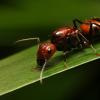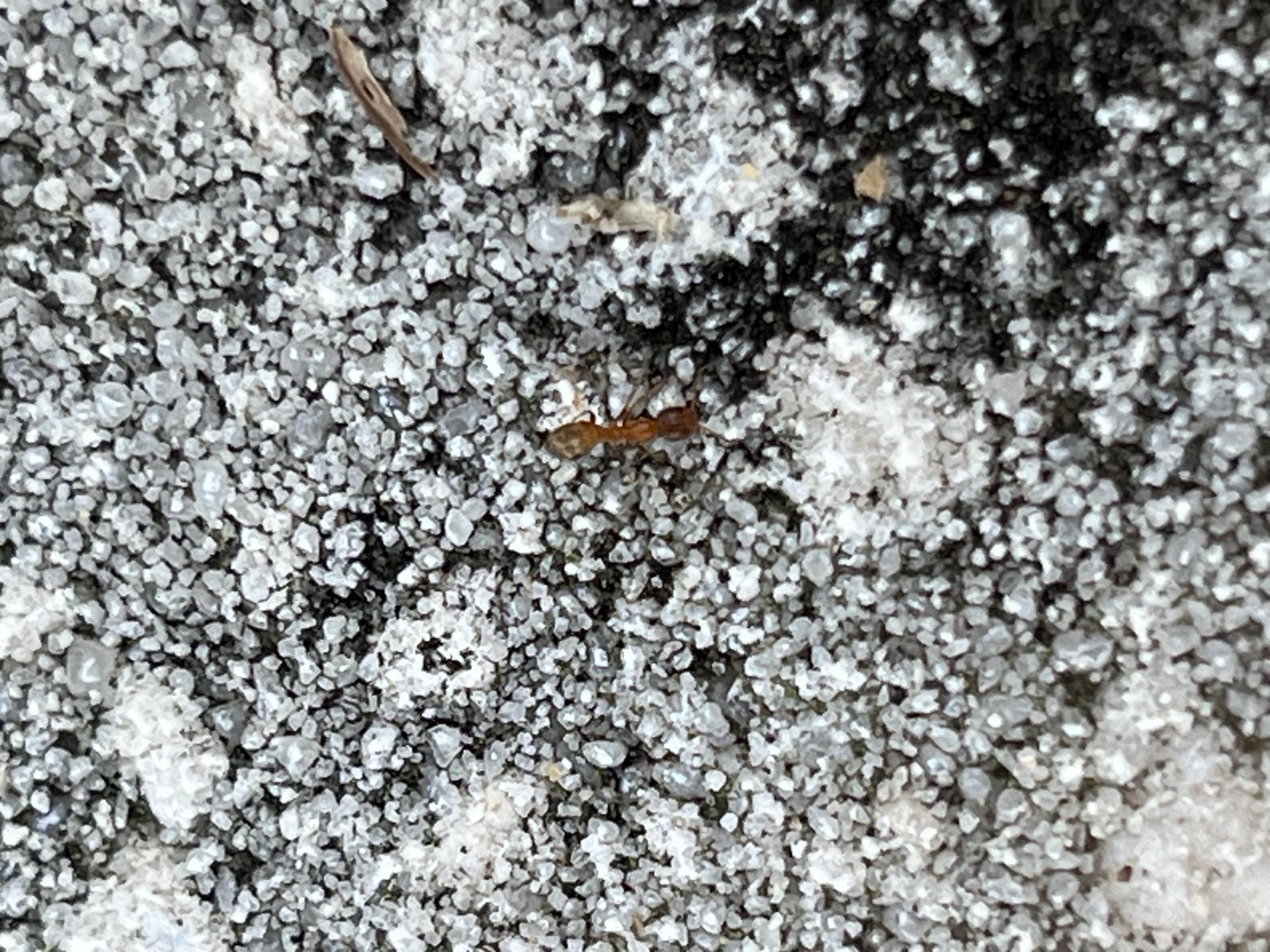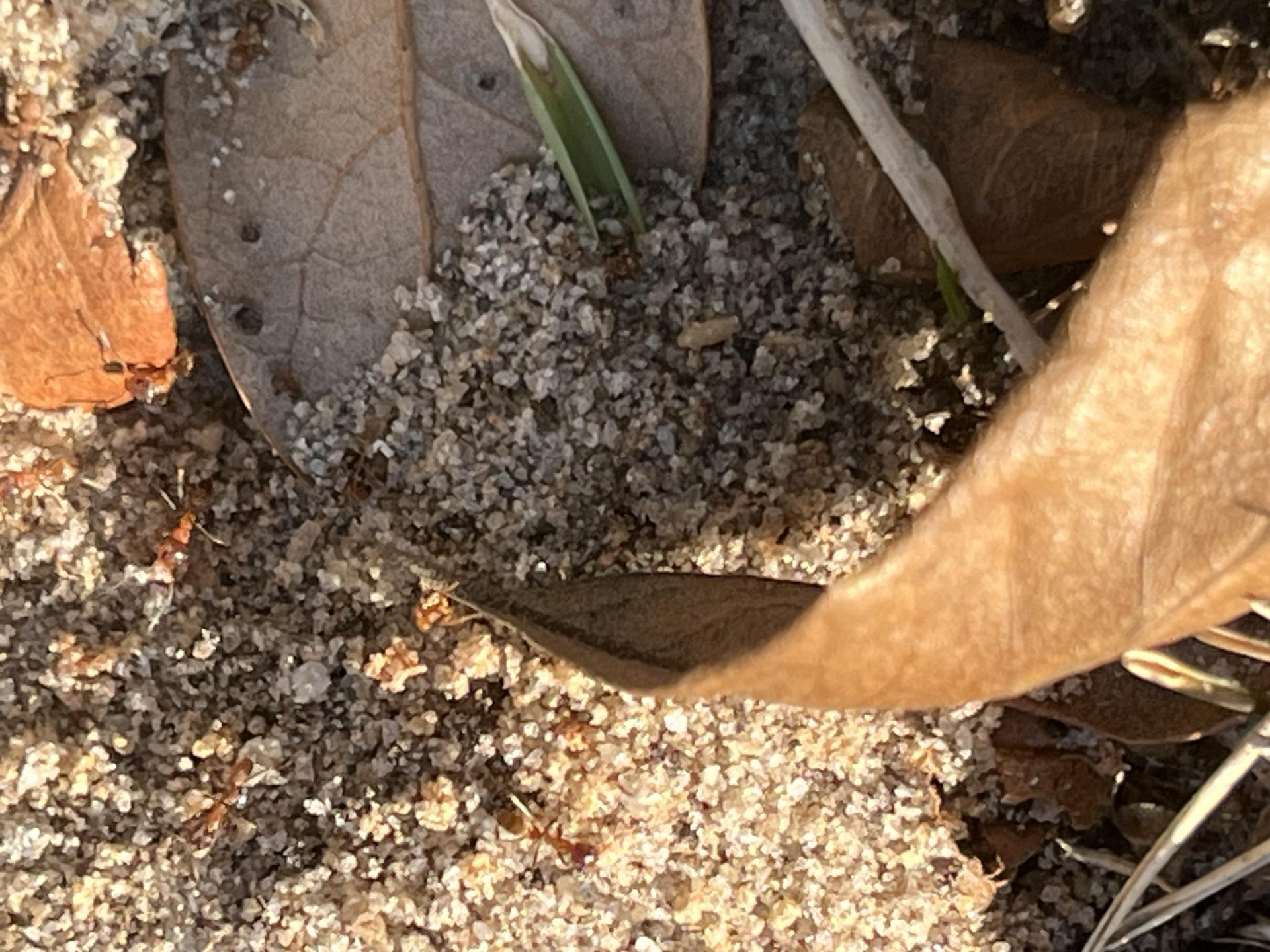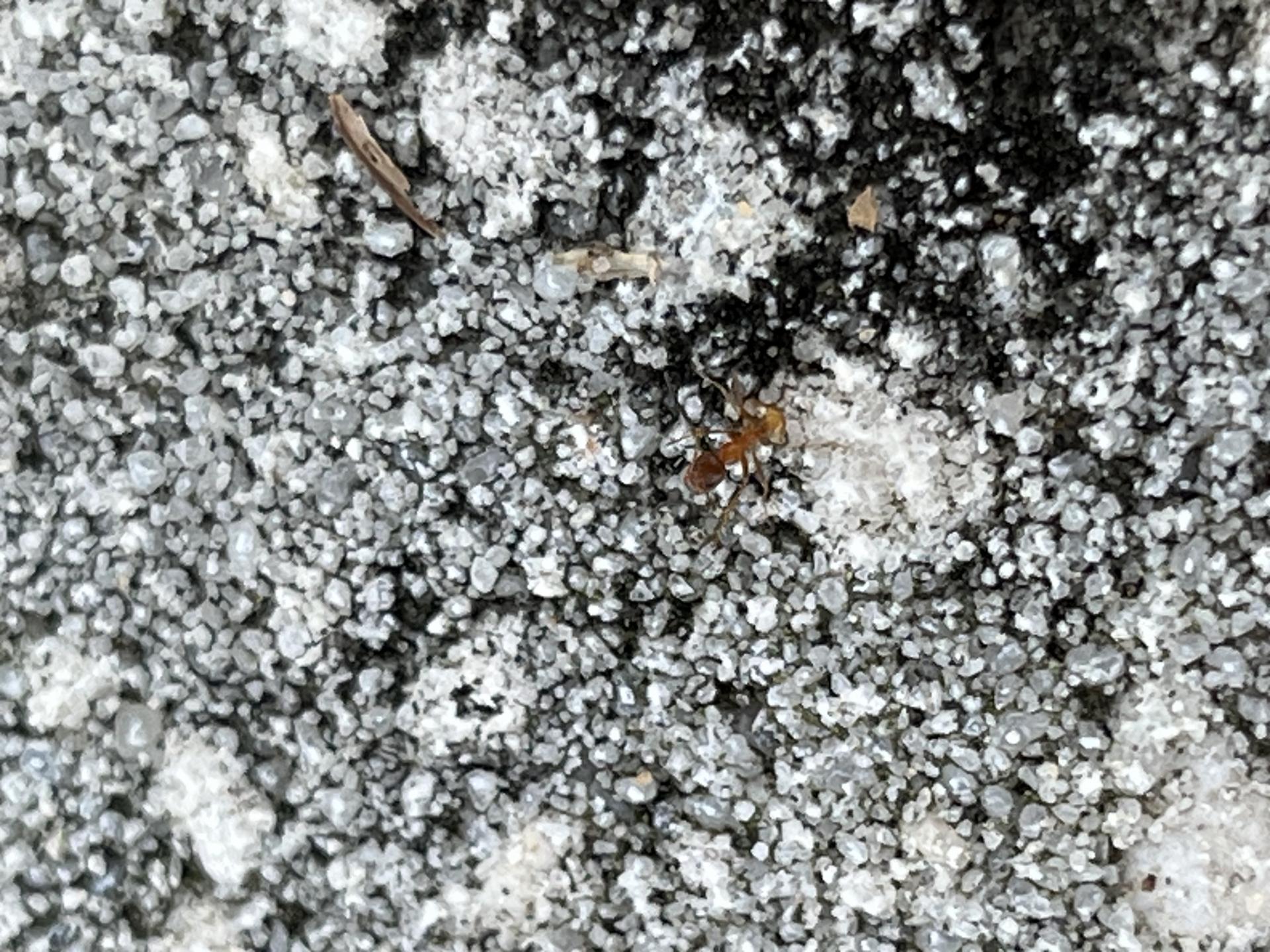LOCATION: Orlando, Florida (USA) 3-12-24
NEST: Nests are constructed with sand in meadows and fields. Usually aren't too big and never consist of more than one hill. Mounds are volcano shaped, like a funnel.
LENGTH (ESTIMATE) About four to five millimeters, based off of comparisons with other ants (such as S. invicta which they are the same size).
APPEARANCE Yellow to orange. Gasters may have a tint of brown. Ants have long legs. No visible stinger. Appear to have two petiole nodes, although it is hard to count due to their small size
BEHAVIOR: Ants are shy and dart around. They do seem a bit unintelligent, failing to recognize sugar sources as food. They seem to be a scavenger species, as a worker was unable to kill a maggot she attempted to fight. They are tolerant of other species, nesting near fire ant nests and walking by their workers without attacking. If you touch a worker, she will begin to frantically run around.
NEST SIZE: Smallest nest had roughly fifteen workers and fifteen broods. Largest colony had about seventy workers, enough brood that it is visible from the nest entrance (when nest entrance is expanded). Strangely, I broke into a few colonies over my time of seeing them, but I have never found a queen in them. Odd.
PICTURES:
Dead worker (picture hard to get due to small size.)
A nest of the ants in question.




















